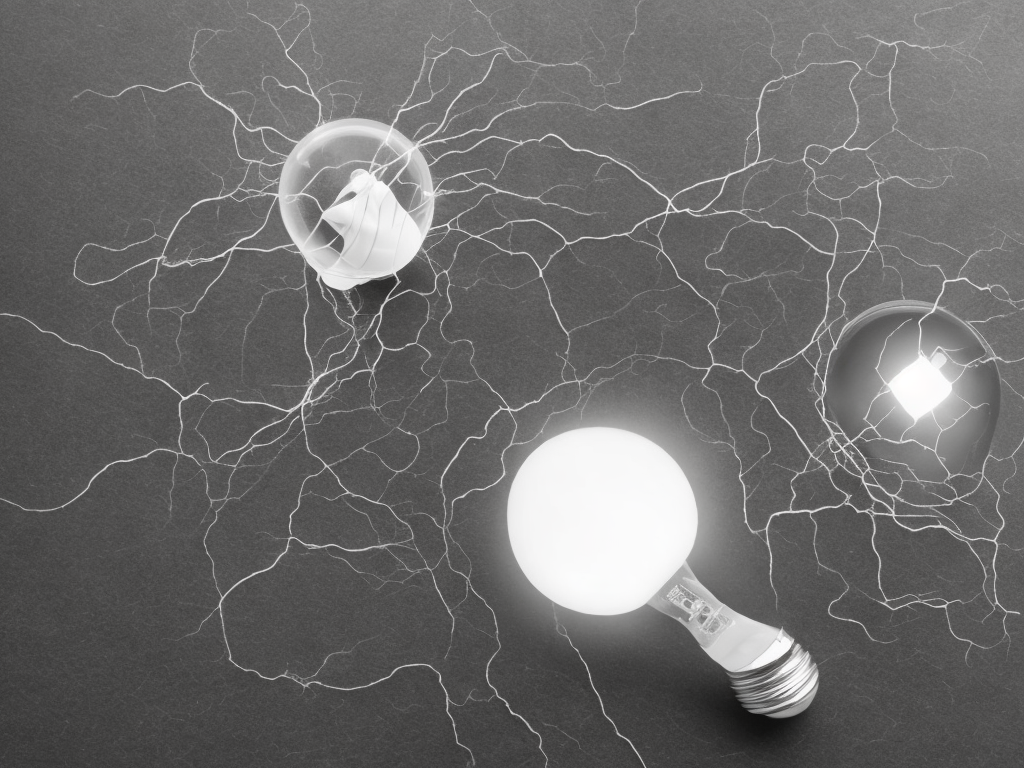
Introduction
In the electrical world, there are two types of power, AC (alternating current) and DC (direct current). These two types of power are used interchangeably, but their characteristics and applications are very different. In this article, we will take a closer look at the difference between AC and DC and how they are used in various applications.
Alternating Current
AC or alternating current is the most commonly used type of power. It is called alternating because the voltage and current are constantly changing direction. It means that the voltage in an AC circuit goes from maximum to zero, then from zero to maximum again, then back to zero, and so on. This cycle is repeated continuously, and it is measured in Hertz (Hz). For example, in the United States, the AC power frequency is 60 Hz, and in Europe, the AC power frequency is 50 Hz.
AC power is created by generating an electrical current that oscillates back and forth. In most power plants, this is done by a generator that uses a spinning turbine to create the electrical current. The turbine is usually driven by steam, which is generated by burning coal, oil or natural gas. The current is then transmitted over long distances to homes and businesses through power lines.
Advantages of Alternating Current
AC power is easier to generate because it can be produced by generators that use a wide range of energy sources. Like coal, natural gas, nuclear, solar, wind, and hydroelectricity. Therefore, it makes it more cost-effective than DC power.
Furthermore, AC power can be transmitted over long distances with less power loss than DC power. It means that it can be transmitted from power plants that are located far away from cities to provide electricity to millions of homes and businesses. AC power is also safer than DC power because it is less likely to cause electric shocks than DC power.
Disadvantages of Alternating Current
However, Alternating Current also has some drawbacks. One of the main disadvantages of AC power is that it is more difficult to store than DC power. It's because, at the moment, we don't have an efficient way of converting AC power to DC power.
Moreover, the devices that run on AC power are more complex and more expensive than those that run on DC power. It is because AC devices require more complex circuitry to convert the AC power into the voltage and current levels required by the device. Therefore, it could be inefficient in a DC device.
Direct Current
Direct current, or DC, is the opposite of AC. In a DC circuit, the voltage and current always flow in the same direction. DC power is generated by batteries and solar cells, which produce a steady flow of electrons. It is also used in some special applications, such as welding, electroplating, and some medical procedures.
Advantages of Direct Current
DC power is more efficient for certain applications because it doesn't require a complex circuitry to convert the voltage and current levels. For example, electronic devices like computers, smartphones, and tablets use DC power because they need a constant voltage to function properly.
Moreover, DC power is much easier to store than AC power. It is because it can be stored in batteries, which can be recharged and reused many times. DC power is also safer than AC power in some applications because it doesn't cause electric shocks.
Disadvantages of Direct Current
The main drawback of DC power is that it is more complicated to generate than AC power. It requires special devices, such as batteries or solar cells, to create a steady flow of electrons. Also, DC power is difficult to transmit long distances because it loses its power over time. Therefore, it is not suitable for large-scale power generation and distribution.
Applications of AC and DC
AC and DC power both have their unique characteristics and applications. Alternating current is used to power most appliances and devices in homes and businesses. It is also used to power large industrial machinery, such as electric motors and generators. AC power is also common in transportation, as it is used in electric cars, trains, and subways.
On the other hand, direct current is used in smaller portable devices like smartphones, tablets, and laptops. It is also used in special applications like welding, electroplating, and medical procedures. Furthermore, DC power is common in automotive applications, as it is used to power the engine starter, headlights, and other accessories in many cars and trucks.
Conclusion
In conclusion, the main difference between AC and DC power is the direction of the voltage and current flow. AC power oscillates back and forth, while DC power flows in one direction. AC power is more commonly used because it can be generated, transmitted and distributed more efficiently than DC power. However, DC power is useful in certain applications, especially for devices that require a constant voltage to function correctly, like electronic devices. In any case, both AC power and DC power are essential components of modern life, and we rely on them every day in some fashion.
 Self-Instruct
Self-Instruct